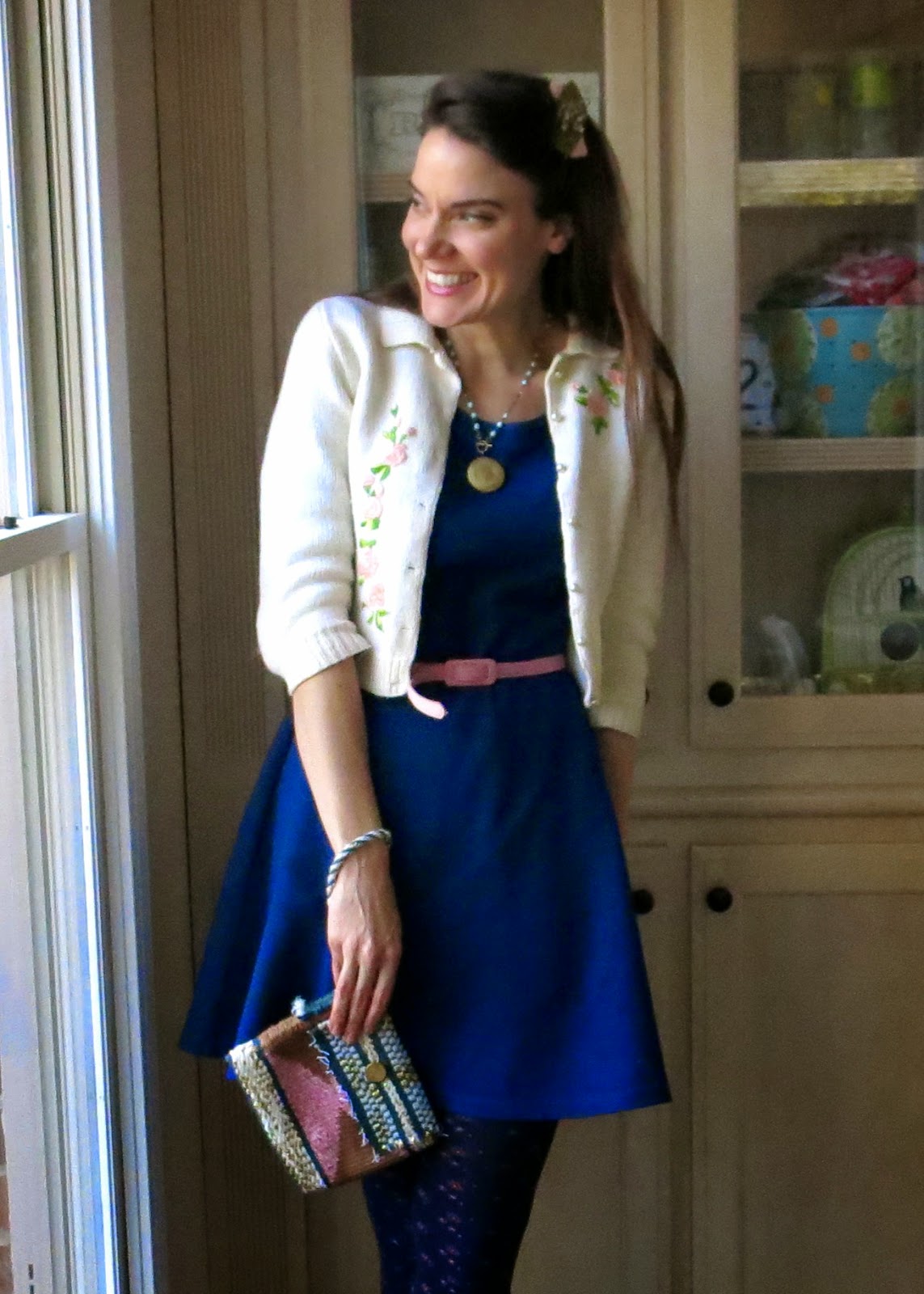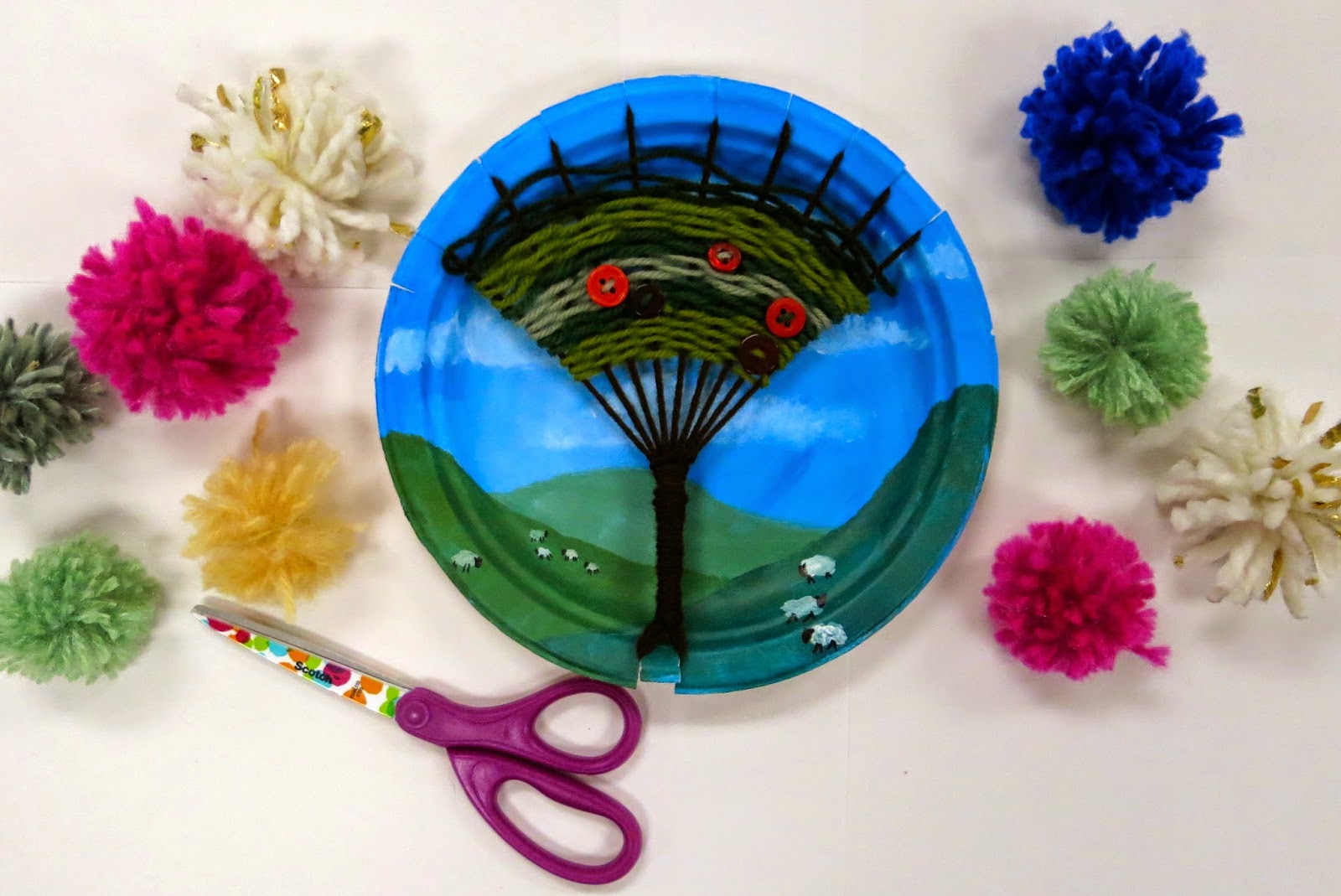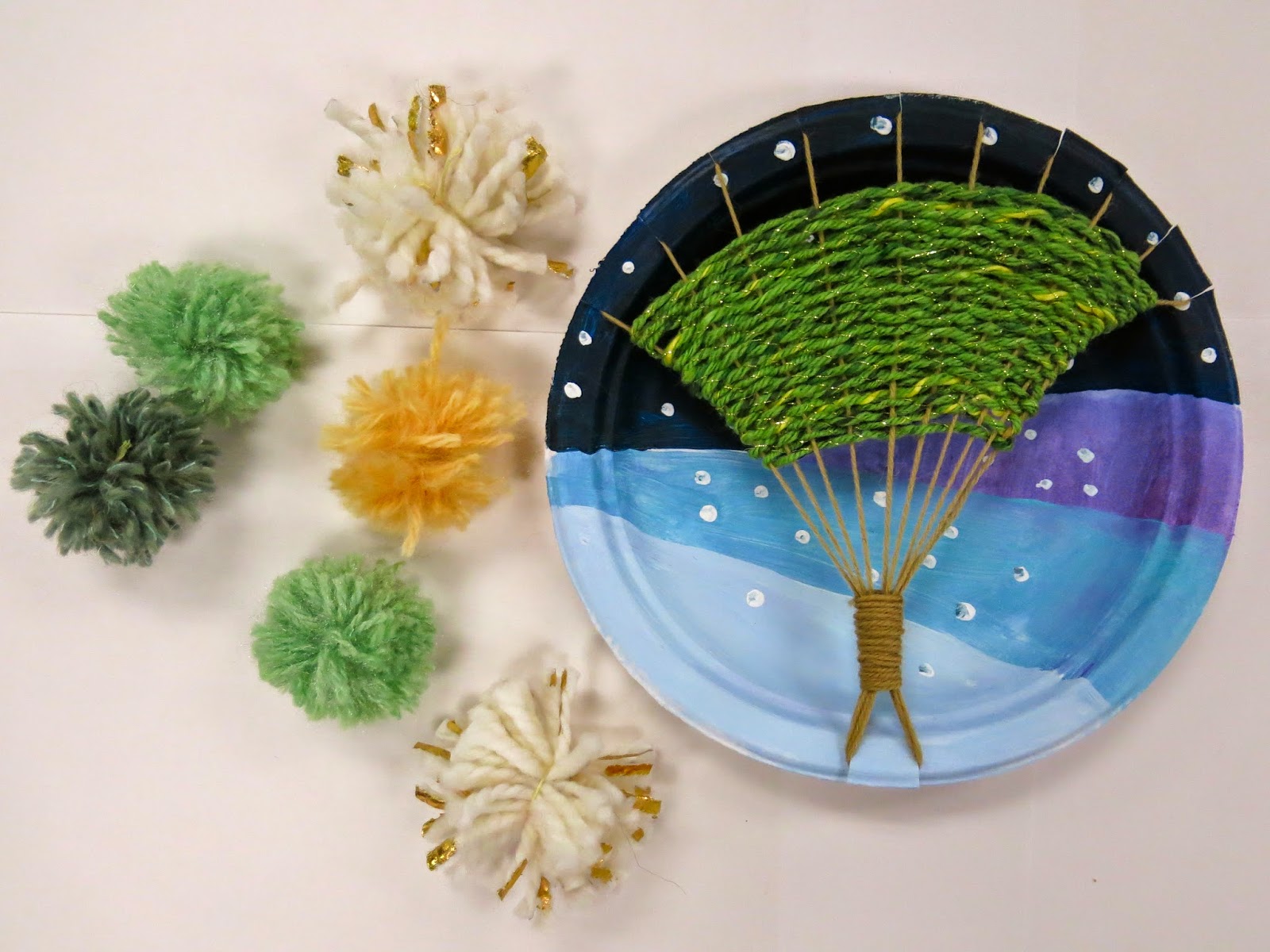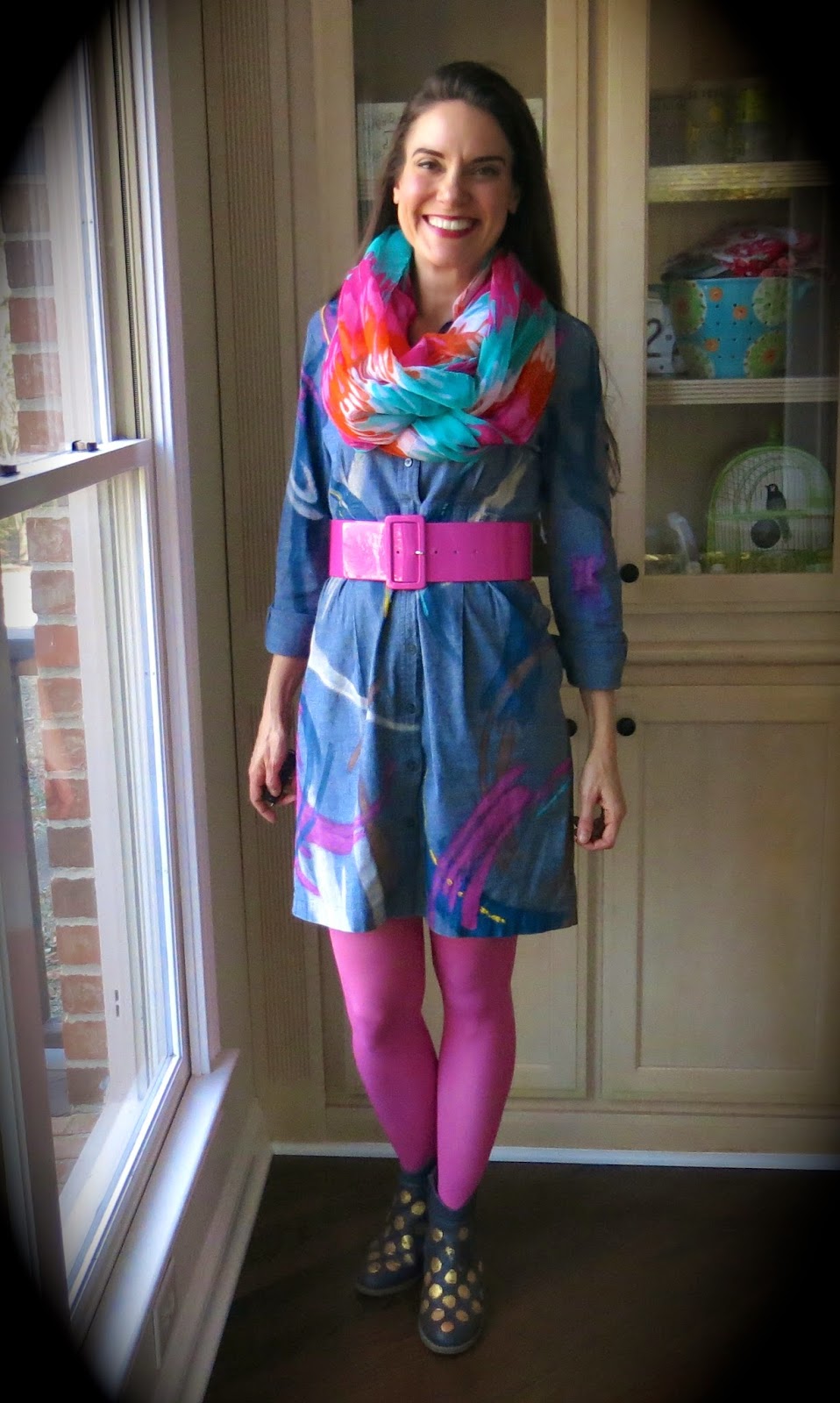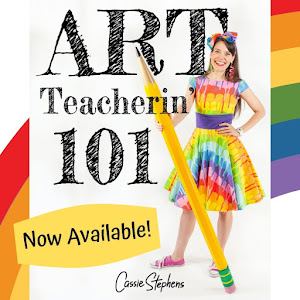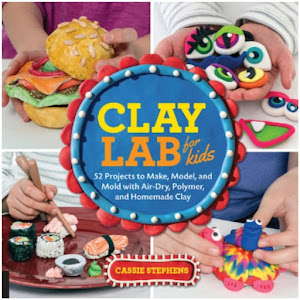Welcome to the season finale of the Weaving Series, y'all! I do hope that you've enjoyed this little trip down weaving lane as much as I have. I know I was always super stressed about teaching kids this craft when I didn't feel so confident myself. I'm hoping that these posts, videos and avalanche of photos have been useful for you. Here's a recap of all the posts from this series:
The Weaving Series: Paper Loom Weaving (perfect for first grade)
The Weaving Series: Straw Weaving (second grade and up)
The Weaving Series: Circle Loom Weaving (second grade and up)
The Weaving Series: CD Loom Weaving (second grade and up)
The Weaving Series: Ojo de Dios (second grade and up)
The Weaving Series: Tree Weaving (third grade and up)
So, I'd love to hear from you! Have you given any of these projects a go? Did you find the videos useful or are step-by-step photos your preference? If I do another series, what would you be interested in? Thank you so much for the feedback, guys!
Today I'm sharing with you a woven clutch project that is just perfect for those kids in fourth grade and up. It brings together all of those skills learned from previous weaving experiences however it's simple enough for those that have never woven before to do.
A while back, I shared a series of posts that detail how to weave a basic pouch. You'll definitely want to start here if you've never created a woven pouch before. In this post, I'm going to show you how to get fancy with your pouch (btw, I have a habit of calling these creations a "pouch" for fear that I'll drop the "purse" bomb in front of a class of boys. And you know what that would mean: Game.Over.) So, follow these links to begin your pouch then c'mon back for some fancy stitchin':
Pouch Weaving, One: Getting Started
Pouch Weaving, Two: Weaving the Flap
Pouch Weaving, Three: Removing the Weaving
Pouch Weaving, Four: Weaving the Cord

So in today's post, Ima gonna show you how to do a little tapestry weaving along with creating a buttonhole and a checkerboard pattern.
Just to be a brag-a-saurus for a pinch, can I just tell you how much I love the back of this clutch? It took me a while (weaving with fine yarn was prolly not the smartest move) but I love the way it looks...and I'm already dreaming up my next woven clutch! Lemme show you how I created this triangular tapestry.
For this, you'll be using a dovetail tapestry stitch. For me, this entailed weaving with four needles at once (confusing? kinda. But for those middle and high school kids, def doable): two needles of brown yarn for the sides and two needles of pink for the triangles on either side of the clutch.
I found this super groovy 1970's craft book which had these super groove diagrams of all the stitches. This is a close up of what that dovetail woven stitch looks like.
I wove this guy a couple years ago with some funky yarn. While I think the end result was cool, weaving with that stuff is a headache. For your first go, I'd definitely use regular yarn.
You can see a different take on that dovetail weave here.
Now, let's talk buttonhole. That was simple. I really like simple. That checkerboard pattern? Gave me 5 new gray hairs and a migraine. Mostly cuz I wasn't doing it right for the longest time. In this clip, I'll show you how it's done (bear with me, it's confusing):
Here's a peak at what the buttonhole weave looks like. You're just creating an opening. Cake.
The cord is by far the most fun and simplest thing to create. My kids love creating these! We turn them into bracelets, belts and, of course, the strap for our clutch. I've created these cords with kids as young as second grade.
To attach the cords, I usually hand sew them to the side of the pouch. On my larger clutch, I first stitched a figure-eight around the base of the cord before hand sewing it to the clutch. I'm so happy with these little guys! And I know you and your students would be as well.
DISCLAIMER, SHAMELESS SELF-PROMO: Y'all. If you've not voted for your fave art ed blog, would you mind taking a moment to do so? There's some fantastic ones and my crazy blog is in the mix (in the "Wild Card" division). If you'd be so kind to cast your vote (you can vote for as many blogs as you like), that'd be just swell. Here's the link.
And there you have it! The season finale of The Weaving Series! I do hope you enjoyed this woven adventure.

The Weaving Series: Paper Loom Weaving (perfect for first grade)
The Weaving Series: Straw Weaving (second grade and up)
The Weaving Series: Circle Loom Weaving (second grade and up)
The Weaving Series: CD Loom Weaving (second grade and up)
The Weaving Series: Ojo de Dios (second grade and up)
The Weaving Series: Tree Weaving (third grade and up)
So, I'd love to hear from you! Have you given any of these projects a go? Did you find the videos useful or are step-by-step photos your preference? If I do another series, what would you be interested in? Thank you so much for the feedback, guys!
Today I'm sharing with you a woven clutch project that is just perfect for those kids in fourth grade and up. It brings together all of those skills learned from previous weaving experiences however it's simple enough for those that have never woven before to do.
A while back, I shared a series of posts that detail how to weave a basic pouch. You'll definitely want to start here if you've never created a woven pouch before. In this post, I'm going to show you how to get fancy with your pouch (btw, I have a habit of calling these creations a "pouch" for fear that I'll drop the "purse" bomb in front of a class of boys. And you know what that would mean: Game.Over.) So, follow these links to begin your pouch then c'mon back for some fancy stitchin':
Pouch Weaving, One: Getting Started
Pouch Weaving, Two: Weaving the Flap
Pouch Weaving, Three: Removing the Weaving
Pouch Weaving, Four: Weaving the Cord

So in today's post, Ima gonna show you how to do a little tapestry weaving along with creating a buttonhole and a checkerboard pattern.
Just to be a brag-a-saurus for a pinch, can I just tell you how much I love the back of this clutch? It took me a while (weaving with fine yarn was prolly not the smartest move) but I love the way it looks...and I'm already dreaming up my next woven clutch! Lemme show you how I created this triangular tapestry.
I found this super groovy 1970's craft book which had these super groove diagrams of all the stitches. This is a close up of what that dovetail woven stitch looks like.
I wove this guy a couple years ago with some funky yarn. While I think the end result was cool, weaving with that stuff is a headache. For your first go, I'd definitely use regular yarn.
You can see a different take on that dovetail weave here.
Now, let's talk buttonhole. That was simple. I really like simple. That checkerboard pattern? Gave me 5 new gray hairs and a migraine. Mostly cuz I wasn't doing it right for the longest time. In this clip, I'll show you how it's done (bear with me, it's confusing):
Here's a peak at what the buttonhole weave looks like. You're just creating an opening. Cake.
And here's that confounded checkerboard weave. Oui. It's not hard it's just confusing for the small minded like myself.
The cord is by far the most fun and simplest thing to create. My kids love creating these! We turn them into bracelets, belts and, of course, the strap for our clutch. I've created these cords with kids as young as second grade.
To attach the cords, I usually hand sew them to the side of the pouch. On my larger clutch, I first stitched a figure-eight around the base of the cord before hand sewing it to the clutch. I'm so happy with these little guys! And I know you and your students would be as well.
DISCLAIMER, SHAMELESS SELF-PROMO: Y'all. If you've not voted for your fave art ed blog, would you mind taking a moment to do so? There's some fantastic ones and my crazy blog is in the mix (in the "Wild Card" division). If you'd be so kind to cast your vote (you can vote for as many blogs as you like), that'd be just swell. Here's the link.
And there you have it! The season finale of The Weaving Series! I do hope you enjoyed this woven adventure.












